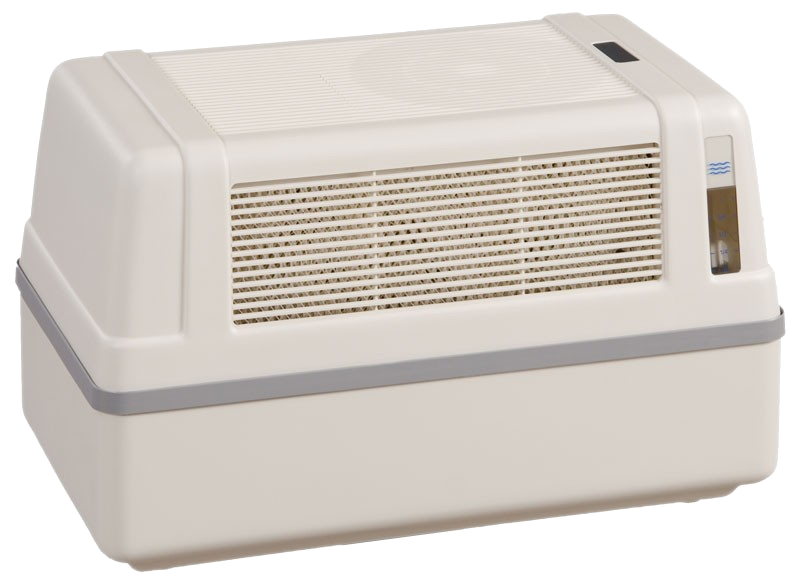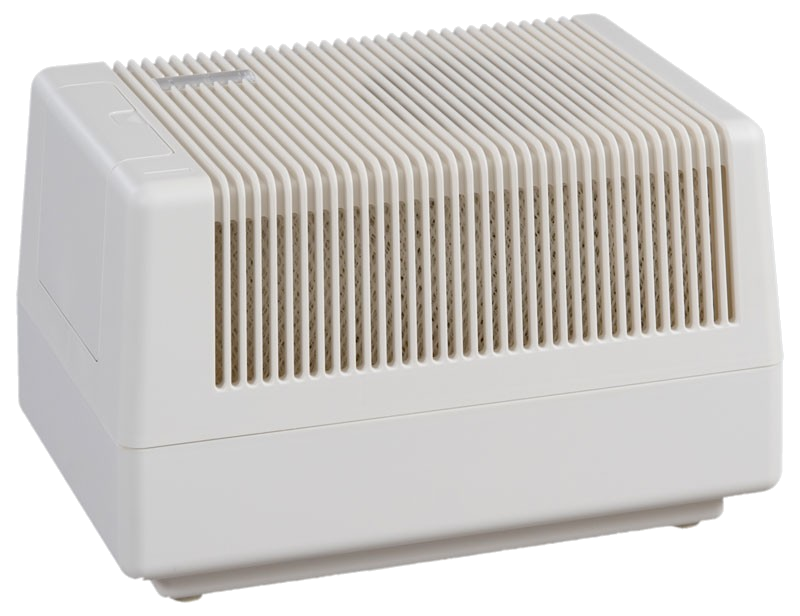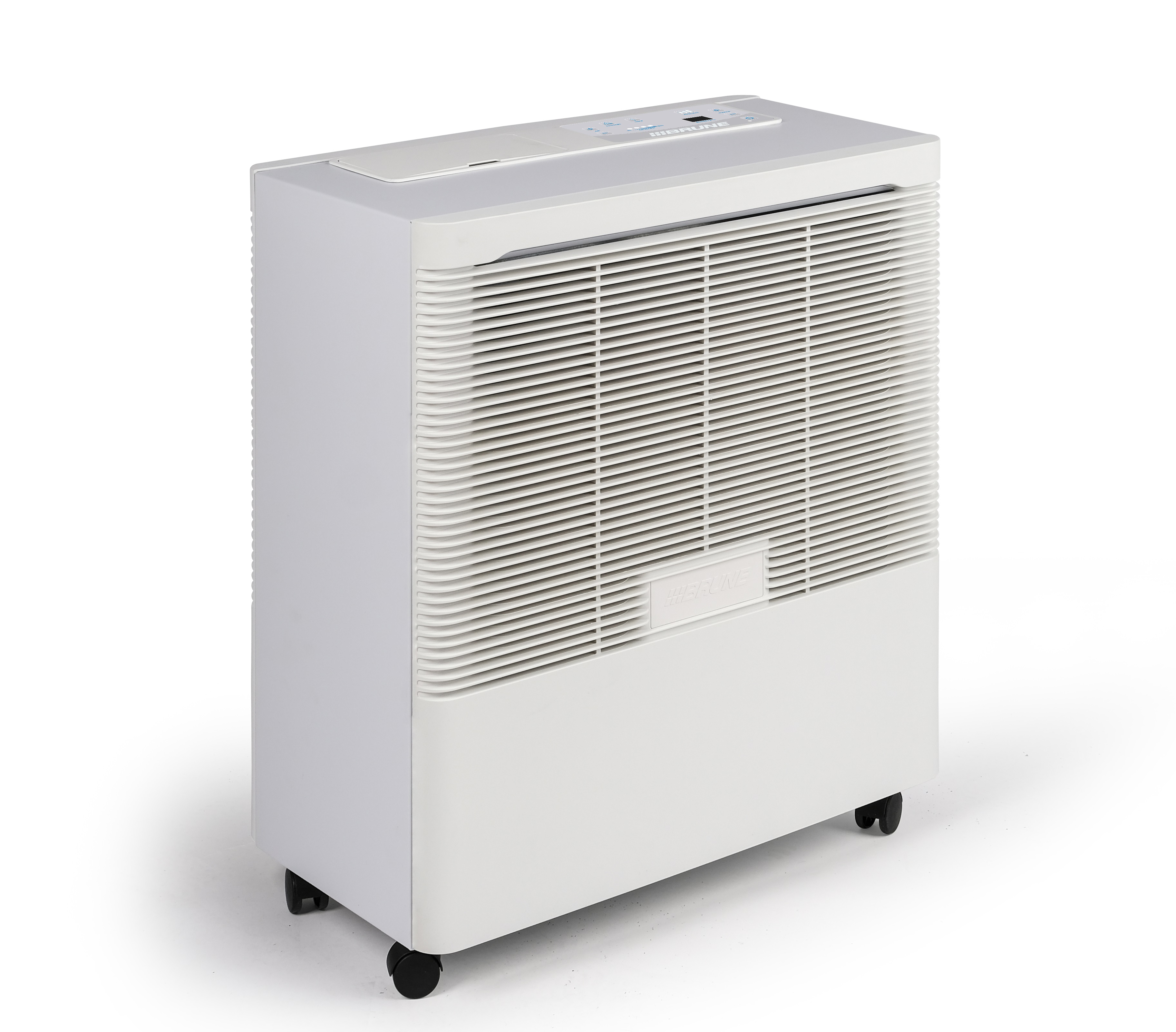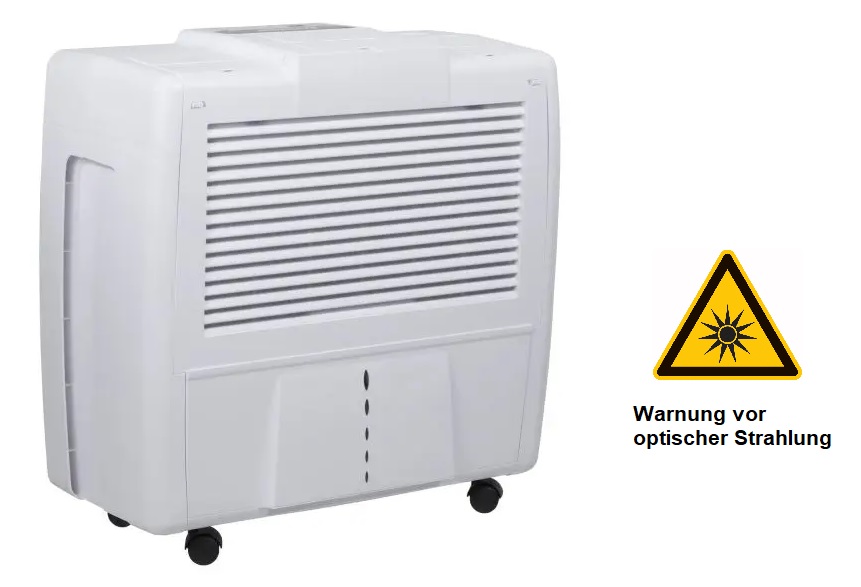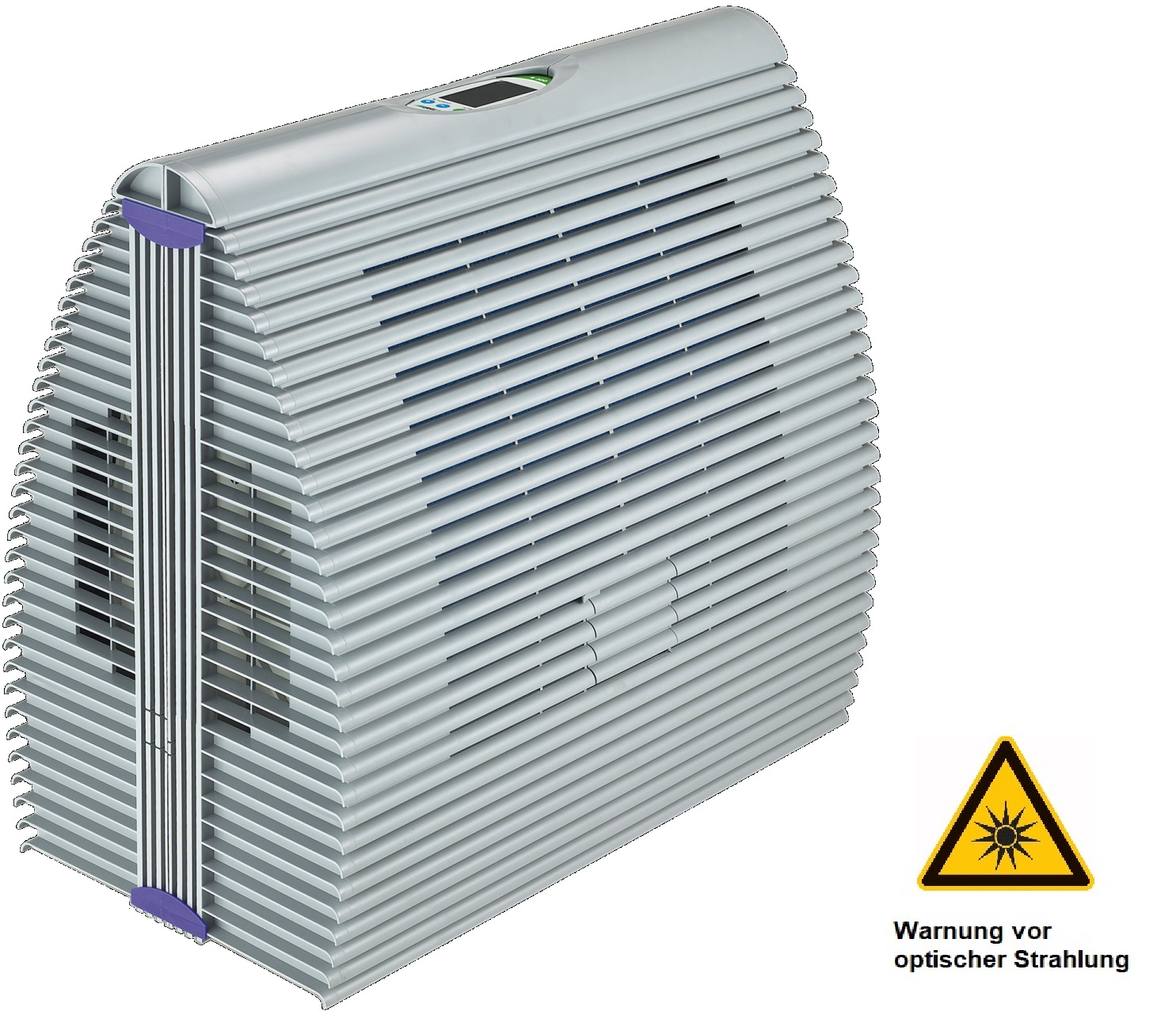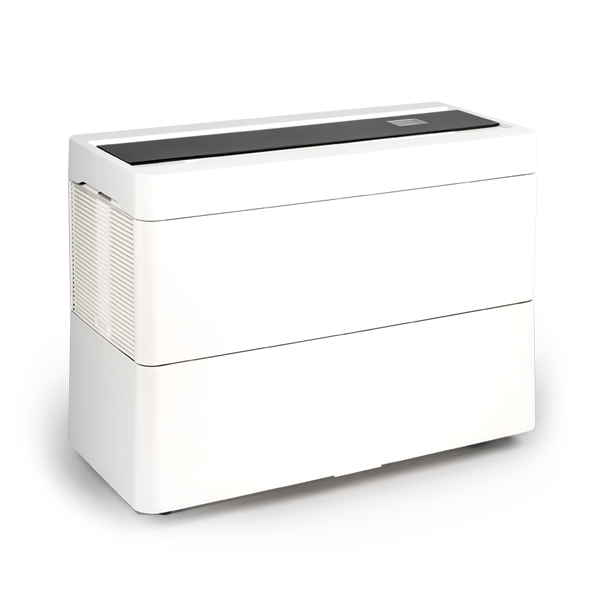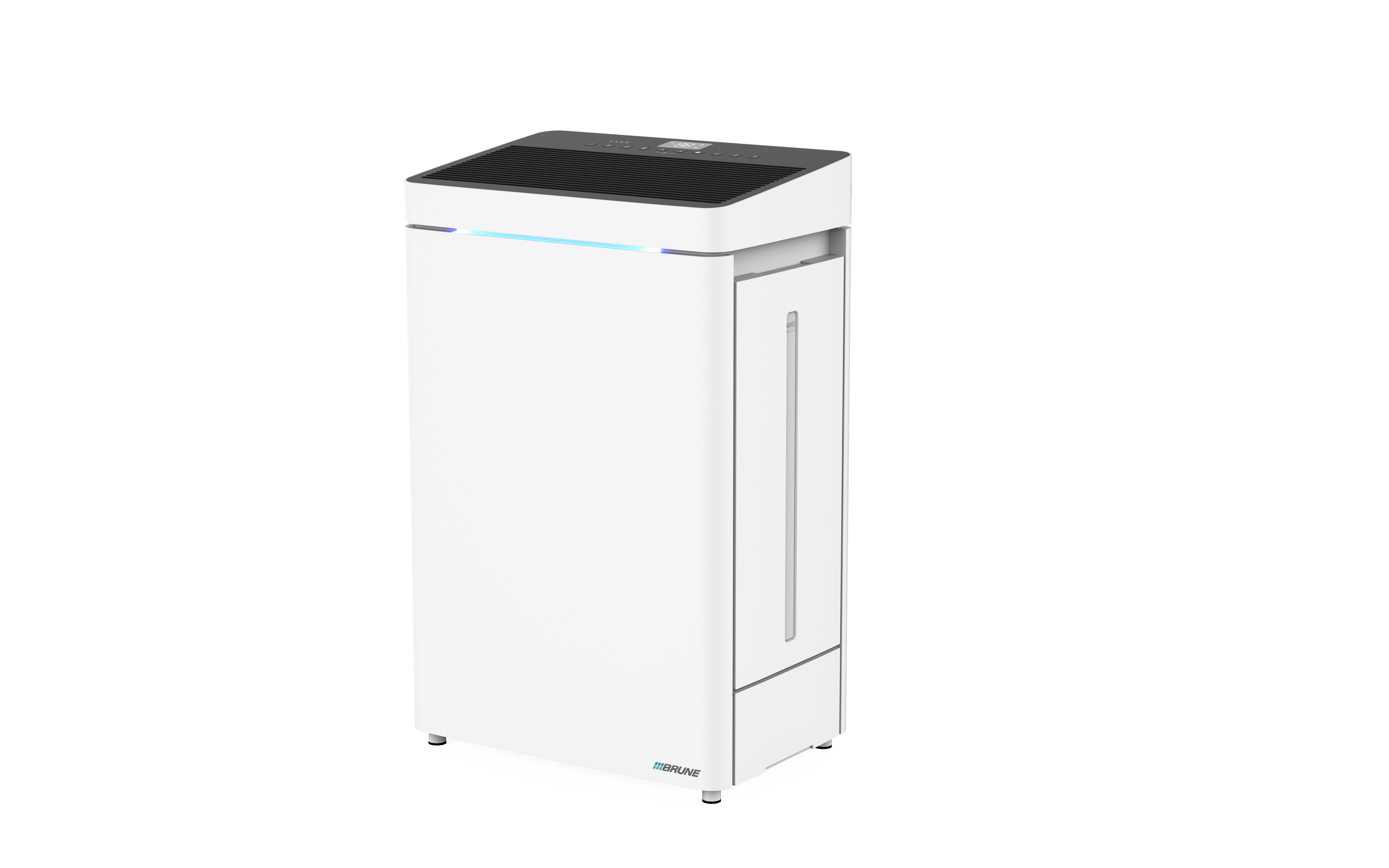HUMIDIFIERS FOR YOUR ROOMS


BRUNE humidifiers: suitable for private homes as well as firms and public institutions.
Humidifiers are booming especially in winter – in private surroundings as well as in offices and show rooms. That is because people are especially comfortable at humidity levels between 50 and 60 percent.
Regular heating doesn´t only cause warm, but also very dry ambient air which irritates the eyes and the respiratory system. The personal wellbeing suffers.
Pieces of art also have special requirements as to their surroundings. Apart from external influences – like light incidence – the climatic conditions at the exhibition or storage location play a part in saving values or causing damage.
BRUNE humidifiers provide a remedy. They utilize special evaporation filters that also clean the ambient air. In addition, they are easy to use and use only small amounts of power. Thus BRUNE humidifiers provide optimum climatic conditions in a simple way, while at the same time increasing the personal wellbeing.
Filter products

| B 120 | B 125 | B 200 | B 260 | B 280 | B 300 | B 600 | |
|---|---|---|---|---|---|---|---|
| Max. air performance in m³/h | n.a. | n.a. | 500 | 500 | 500 | 600 | 900 |
| Max. evaporation performance in l/h | n.a. | n.a. | 1,0 | 1,1 | 1,2 | 1,4 | 2,6 |
| Operating noise in dB | 34 | 34 | 32-55 | 30-50 | 32-44 | 32-40 | 32-58 |
| Max. room size in m³ | 130 | 140 | 500 | 500 | 500 | 600 | 1000 |
| Max. power consumption in W | 25 | 25 | 55 | 65 | 45 | 58 | 130 |
| Water tank in l | 11 | 11 | 8 | 20 | 25 | 25 | 50 |
| Empty weight in kg | 3,6 | 4,2 | 11,2 | 18,4 | 14 | 19 | 28 |
Humidifiers allow you to regulate the humidity in private or public rooms. Choose one of our innovative devices depending on your humidification requirements, the size of the room and the time of year. We will advise you on your choice and show you when it is essential to use it. Find out what advantages humidifiers offer you in everyday life. Some figures provide interesting insights into the importance of indoor air and its quality for us humans.
An adult takes in around 13,000 litres of air every day, which corresponds to around 29,000 breaths, including exhalation. This happens via the nose, mouth and throat. Now you need to know that the humidity in combination with the temperature can create a pleasant or unpleasant feeling, depending on how you feel. A slightly higher humidity level of 60 to 70 per cent at a temperature of only 17 to 18 degrees Celsius is quite pleasant for many people. This makes it possible to reduce heating costs for a short time by using a humidifier.
Advantages
Studies show that the ideal climate situation is achieved in a room with around 50 per cent humidity and 20 degrees Celsius. A humidity level of between 40 and 60 per cent is considered normal and comfortable, but is often exceeded or fallen short of. You can use a humidifier to regulate the relative humidity of rooms that are too dry.
People suffer from excessively dry air in winter, for example. This is primarily due to the heating, which causes the relative humidity to drop. The consequences are dry skin, burning eyes and problems with the respiratory tract. A humidifier provides a remedy and ensures a positive balance. Apart from people, certain objects are also dependent on a "healthy" indoor climate. This applies to furniture and especially to works of art such as paintings or sculptures made from natural materials. In this way, the humidifier actively contributes to preserving the value of the artefacts. In renowned museums with expensive exhibits, controlling and regulating the temperature and humidity is therefore indispensable.
With a humidifier of the latest generation, you can adjust the moisture supply individually or react spontaneously to changes. In the best case scenario, you can prevent the following negative phenomena with a humidifier:
- Burning eyes
- Problems with the respiratory tract (scratchy throat)
- More severe manifestation of existing asthma
- Dry skin
- Irritation with neurodermatitis (redness, eczema)
- Damage to works of art, furniture and musical instruments
- Increased dust levels in the air
- Longer shelf life and longer transmission distances for viruses
- Damage to parquet floors
- Electrostatic charging
Physical principles of air humidification
The total amount of water vapour present in a given volume of air is referred to as absolute humidity or vapour pressure and is expressed in grams per m³ of air. The maximum amount of water vapour that this volume of air can absorb increases with temperature. Relative humidity (commonly known as relative air humidity) is the percentage ratio between the maximum possible amount of water vapour at a certain temperature and the actual amount currently present in the air volume. It follows that simply increasing the air temperature (e.g. by heating) will reduce the relative humidity in the room.
What you should consider when buying a humidifier
In our selection, we differentiate between various systems with a tank and a direct connection to the water system. There are three different humidification systems: vaporiser, evaporator or atomiser. In addition to the type and method, other aspects are also relevant for you when purchasing. For many users, the weight or noise level also plays an important role. In terms of weight, the models vary from less than 4 kg for the smallest devices to a maximum of 21 kg for the largest model. However, the larger appliances are equipped with castors, which ensures easy handling of the appliances.
Checklist for purchasing a humidifier
Humidifier type
Noise pollution (in decibels)
Power consumption
Room size
Weight
In our selection you will discover devices that, depending on the type of fan, only reach an operating volume of 30 to 40 dB. This puts us in the range from whispering to a background noise comparable to a quiet residential street at night. Our large devices for larger living spaces, offices or public buildings reach 44 dB.
These are equipped with a multi-stage fan, allowing the fan noise to be adjusted to the situation as required.
The size of the room, from a small living room to an open-plan office, is another important factor. It is important when buying a suitable appliance. Here you can remember the following rough categorisation: The humidifier should be able to circulate the air in the entire room at least once an hour. This means that a device with an air capacity of 150m³, for example, can humidify a maximum room size of 60m² at a room height of 2.50 metres. This is highly dependent on whether it is a closed room and no negative factors (ventilation, tiled stove) influence the humidification. It is better to design the device a little larger, as this achieves the humidification result more quickly and allows comfortable operation with a lower noise level or a lower fan speed.
A final point is energy consumption. The necessary power supply is provided by a mains plug (230 V). The devices are not only quiet, but also economical in terms of consumption, depending on the power. The smallest humidifiers require less than 25 W, while the large version requires a maximum of 90 W. They are easy to put into operation without any major installation work.
Humidification types
In general, there are three different types of humidification, which have their advantages and disadvantages depending on the application.
In an evaporator, the air is channelled through or over a moist filter mat by means of a fan, where it absorbs the moisture independently via the surface (evaporation). Atomisers, often also referred to as nebulisers, atomise the water into very fine particles via a rapidly vibrating ultrasonic membrane or a very fine nozzle, which then dissolve in the air. They are considered less suitable as the water particles are susceptible to germs. In contrast, so-called vaporisers.
With them, the water is heated, vaporised and released into the room air in the form of water vapour. On the one hand, this has a positive effect on the noise level and, on the other, they kill germs through the heat. However, they often have very high energy and maintenance requirements.
How do our humidifiers work?
Humidifiers from Brune work economically and quietly and you can equip them with various air filters for an ideal room climate. Despite all the technology, ease of use, a good overview and safety are emphasised. It is easy to change filters or connect the appliance. However, the following always applies when working on the appliance: disconnect it from the power supply and pull out the mains plug.
You have read in the previous paragraph that the liquid can contribute to germ formation. This is a problem that our models actively tackle and solve using innovative technology. Some of our humidifiers are equipped with filters for air purification and a special UV lamp for water purification. The air filters in the intake area filter out airborne particles and coarse dust.
Before the air leaves the appliance, it passes through an evaporation filter and the UV light from the lamp additionally sterilises it. This results not only in humid, but also significantly cleaner room air.
You can easily replace the filters, for which we provide clear videos. The same applies to the motor units or checking the UV lamp.
The humidifiers in our range are suitable for all conceivable environments and are simply adapted to the size of the room in terms of size and output. You use them in offices, storage rooms, lounges and living rooms.
The smaller devices are lightweight and can be easily positioned to save space. The humidifiers with a large water tank are flexible in use. You determine the level of humidity via input and monitor the process without any effort. Our devices are discreetly designed and available in white, grey/anthracite or silver. All other parameters can be found in the data sheets on the product pages.
Article overview:
B 120, 11 litre, 3,6 kg
B 260, 20 litre, 17 kg
B 280, 25 litre, 14 kg
B 300, 25 litre, 19 kg
B 600, 50 litre, 28 kg
What systems are available?
We have briefly described the general types of humidification above. At this point, we will look at two systems relating to the water supply. All appliances have a tank which, depending on its capacity, ensures that the air in the room in question is humidified for many hours. The large appliances have an integrated 50-litre tank that you need to refill as required.
When the water tank is empty, the humidifier switches off automatically. You receive a signal via a light and know exactly when you need to refill the tank so that your humidifier can continue working. The water level indicator shows you how much water is left in the tank at all times. You do not have to remove the tank at any time.
As an alternative to the tank, it is possible to connect the appliance directly to a water supply, which enables continuous operation. To do this, book an automatic water supply. This option is just one of several conceivable extensions to make using your new humidifier more convenient.
Use the humidifier wisely in winter
Humidifiers are particularly popular in winter, as heating systems run at full blast during the cold season. The problem is that these not only generate heat, but also room air that is too dry. As people only feel comfortable at a humidity level of between 50 and 60 per cent, the best way to correct this imbalance is with a Brune appliance.
After just a short time, the room air becomes noticeably more pleasant and humid. Thanks to the humidifier, you can prevent health problems and protect your valuable artefacts. Like the humidifier, the heater does not run continuously. To use the humidifier sensibly, adapt its operation to your heating behaviour!
Select the humidifier according to room size
In the checklist, you have read which standard sizes are available for humidifiers. Select a device that is designed for your room size. For larger office complexes, it makes sense to install several humidifiers in suitable locations, depending on your requirements. Our XL model, the B 600 humidifier with a 50-litre capacity, humidifies the air in rooms up to 900 m³ in size.
In comparison, our B 125 humidifier is sufficient for rooms up to 140 m³. You can use the small mobile devices flexibly wherever you need them.
Is a humidifier suitable for use with floor heating?
Yes, it is. As is so often the case, this is a question of measure and centre. Underfloor heating systems are installed under the floor covering, which in turn reacts to different conditions. The technology remains unaffected by the devices. Regardless of whether you install modern laminate, vinyl or parquet flooring, expansion is planned for, as the floor also "breathes" and reacts to humidity and temperatures.
Too much moisture is primarily not recommended for sensitive floors. Extreme humidity over long periods of time would therefore first affect the floor covering and possibly the underfloor heating. If your humidifier is used correctly, all values are balanced and use with underfloor heating is not a problem. Please ask our experts about this.
Brune humidifiers are even suitable for other sensitive areas and rooms: IT rooms, libraries and print shops, laboratories, telephone exchanges. As they work exclusively according to the evaporation principle, overhumidification is impossible. They are easy to handle and economical to operate.
FAQ
You can find out everything you need to know about using and maintaining the humidifiers in the relevant brochures for our products. We will be happy to answer any questions you may have. You will find a brief overview of frequently asked questions in the following section.
How often do you need to clean the humidifier? +
Only water of at least drinking water quality should be used in the humidifier. Continuous maintenance is essential for long-lasting and hygienic operation. Therefore, clean the humidifier regularly, check the water and the filter medium and replace it in good time.
You clean the humidifier at routine intervals. Change the water at least once a week. Other parts such as the tank and the base should be cleaned of dirt using warm water and gentle cleaning agents. Do not wait until a layer of dirt has accumulated here and keep everything clean.
Where should you ideally place the humidifier? +
A central position in the room is advantageous as the exchange and humidification of the largest possible air volumes is faster. To do this, choose a firm and secure stone base. We also recommend an environment with indoor plants. If you are not sure where the right place is in the room, simply test it out. The mobile devices allow a quick repositioning.
Attention: Real wood furniture copes excellently with fluctuations in humidity. However, inexpensive furniture made of veneer is more susceptible to moisture and should be placed away from the humidifier.
How often do you need to change the filter of the humidifier? +
This depends heavily on usage, the degree of contamination in the room air and the water quality. At best, a filter can be used for up to 3-4 months, but you should check it regularly. If you notice significant soiling, you must replace it.
If the filter is dirty and calcified, it will no longer fulfil its function and the maintenance requirements for the entire appliance may increase as a result. Therefore, replace the filters regularly. How to change a filter in short time, you will find out in our explanatory videos. Dispose of the used filters in normal household waste.
Is it possible to place the humidifier next to a heater? +
Yes, this is theoretically possible. A humidifier in the immediate vicinity of the heat source is another way of enriching the dry heating air directly with water. The higher temperature allows the air to absorb the moisture better. However, the higher temperature also puts a strain on the filter and water quality, which can result in a shorter change interval.
Find out about accessories for our humidifiers. We deliver these directly to your doorstep, customised to your needs. For example, you can opt for an automatic water supply, a safety drip tray, a version with radio hygrostat and other features. We will be happy to inform you about the possibilities.









 Deutsch
Deutsch  English
English 